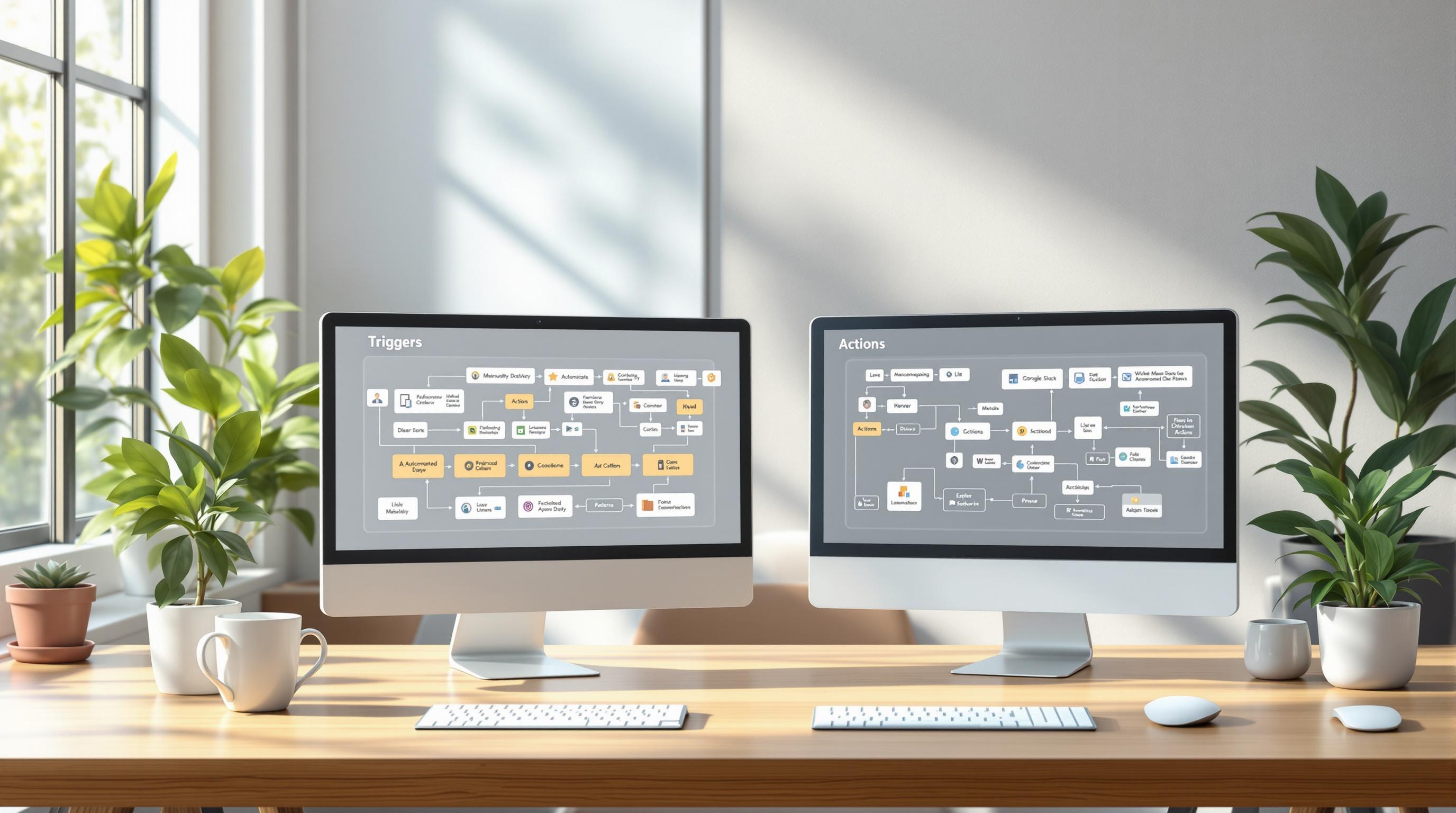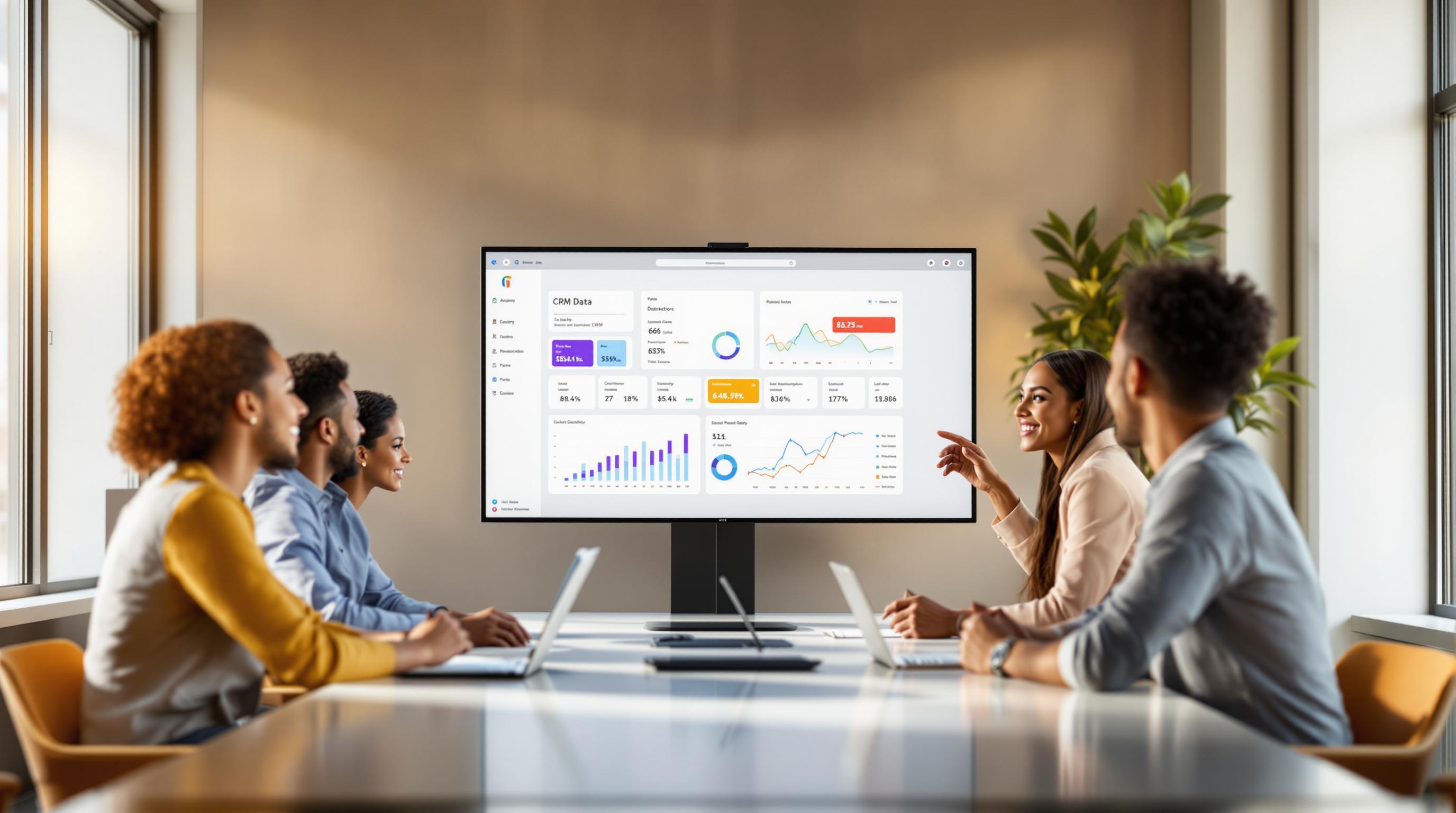Managing a team can be tough, but HighLevel simplifies it. Here's how you can use it to streamline team management:
- Add Team Members: Go to Settings > Team Members, click "Add Team Member", and send invites.
- Set Roles & Permissions: Assign roles like Owner, Admin, Manager, or User to control access. Adjust permissions for tasks like campaign management and reporting.
- Improve Communication: Use internal messaging, dashboards, and alerts to keep everyone informed.
- Track Performance: Monitor metrics like response times, task completion, and conversions through dashboards.
- Onboard New Members: Set up accounts, provide training modules, and use a shadowing system for a smooth start.
- Manage Sub-Accounts: Use tools like role templates, activity monitoring, and custom dashboards for growing teams.
HighLevel helps you organize teams, enhance communication, and track performance - all in one platform.
Go High Level | Team Management Setting Up Users & ...
Team Setup in HighLevel
Easily organize your team by adding members and completing their profiles.
Adding Team Members
To add new members, go to Settings > Team Members.
- Click the "Add Team Member" button.
- Enter the member's name and email address.
- Choose their access level.
- Hit "Send Invite".
The invite email allows them to create an account and join the workspace.
Setting Up User Profiles
Ensure each profile includes:
- Full name
- Role or title
- Contact details
Complete profiles make it easier to assign roles and keep communication smooth within the team.
Roles and Permissions Setup
Once your team is set up, the next step is to refine access by assigning roles and permissions. This helps maintain security and ensures smooth operations.
Default HighLevel Roles
HighLevel comes with pre-configured roles, each offering specific levels of access:
| Role | Access Level | Ideal For |
|---|---|---|
| Owner | Full system access | Business owners, agency heads |
| Admin | Full workspace control | Team leaders, project managers |
| Manager | Limited admin access | Department heads, supervisors |
| User | Basic operational access | Team members, specialists |
| Guest | View-only permissions | Clients, contractors |
You can modify these roles by tweaking individual permissions to fit your team's needs.
Adjust User Permissions
To update permissions, navigate to Settings > Team Members, select a member, click Edit Permissions, and toggle options for:
- Campaign management
- Client communication
- Reporting
- Automation
- Billing
Stick to the "least privilege" principle - only grant access that’s absolutely necessary.
Here are some tips for managing permissions effectively:
- Restrict client data access to only those who need it.
- Limit who can create or edit campaigns.
- Control visibility of billing and revenue details.
- Manage who can configure workspace settings.
For better workflow management, consider adding approval processes:
- Require manager sign-off before publishing campaigns.
- Use standardized communication templates.
- Restrict report generation to exclude sensitive data.
These steps help create secure, efficient workflows for your team.
sbb-itb-f031672
Team Communication Tools
Keeping your team connected and informed is key to running things smoothly. HighLevel offers tools designed to streamline communication and improve collaboration.
Internal Messaging System
With HighLevel's internal messaging system, team members can stay updated instantly, ensuring everyone is on the same page.
Team Dashboards
HighLevel dashboards provide a clear view of task progress and project updates, helping your team track what’s happening in real time.
Team Alerts
HighLevel’s alert system ensures team members never miss important updates or deadlines, keeping everything on track.
These tools integrate effortlessly into your workflows, making it easier to manage your team and their performance.
Workflow and Performance Management
Keep tabs on team performance with HighLevel to improve management and streamline operations. Clear communication and well-defined roles are the foundation for tracking performance effectively. Here's how HighLevel's tools can help bridge the gap between workflow execution and performance evaluation.
Measure Team Results
HighLevel's reporting dashboard gives you a clear view of essential metrics, including:
- Response times: See how quickly team members respond to leads.
- Task completion: Track how often tasks are finished on time.
- Conversion metrics: Analyze success rates across different pipeline stages.
- Activity levels: Gauge overall engagement with the platform.
With this dashboard, you can create custom reports, track metrics for individuals and teams, set up automated alerts, and export data when needed. These insights allow you to make smarter decisions and improve productivity across the board.
Managing Growing Teams
As agencies expand, HighLevel makes team management easier with centralized controls and detailed permission settings.
Sub-Account Permission Control
HighLevel's sub-account system provides separate client workspaces while maintaining centralized oversight. You can set detailed permissions at both the master and sub-account levels, ensuring team members access only what they need. These controls fit seamlessly into your team management approach.
Here are some key tools for managing sub-accounts:
- Role Templates: Predefine permission sets for common roles within your team.
- Access Layers: Assign view-only, edit, or admin rights for each sub-account as needed.
- Activity Monitoring: Keep track of team actions across all sub-accounts.
- Custom Dashboards: Design role-specific dashboards tailored to various team functions.
Create Team Guidelines
Use HighLevel's document storage to centralize your operational procedures. Build a shared knowledge base that includes:
- Standard Operating Procedures (step-by-step workflow guides)
- Response Templates (pre-approved client communication examples)
- Brand Guidelines (design and messaging standards)
- Process Checklists (quality assurance steps)
Keeping these resources in a shared workspace ensures smoother onboarding and day-to-day operations.
New Team Member Onboarding
HighLevel simplifies onboarding with tools to get new members up to speed quickly. Follow these three steps for an efficient process:
Access Setup
- Create user accounts with the right permissions.
- Configure their initial dashboard views.
- Start with limited access, expanding it as they gain experience.
Training Modules
Break training into clear, manageable modules covering:
- Platform navigation basics
- Best practices for client communication
- Workflow management tools
- Reporting and analytics requirements
Shadowing System
- Use screen sharing to show client interactions in real-time.
- Walk through workflows and demonstrate best practices.
- Offer instant feedback using internal chat tools.
- Track their progress as they learn.
This structured approach ensures new team members are productive and confident in their roles.
Conclusion: Team Management Best Practices
To maintain a high-performing team with HighLevel, it's essential to make the most of its features and keep workflows organized. Here are some key practices to ensure smooth operations:
- Keep user profiles updated and adjust permissions as team roles shift.
- Centralize communication using internal messaging and team dashboards.
- Leverage automated alerts to stay on top of deadlines and updates.
- Track performance through HighLevel's reporting tools for actionable insights.



